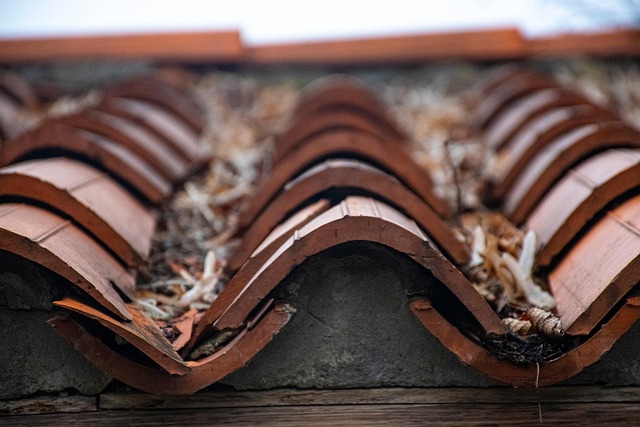Composite shingles are a superior roofing material selection due to their enhanced durability, lightweight design, and improved strength-to-weight ratio compared to asphalt and fiber-cement shingles. They offer long-lasting performance, resistance to weather, mold, mildew, and fading, and simplify installation. Composite shingles also promote sustainability through recycled content and reduce maintenance costs over time. Their aesthetic versatility, ease of installation, and robust construction make them an attractive choice for both DIY enthusiasts and professional contractors, ideal for regions with extreme weather conditions.
“Considering a roofing material upgrade? Explore the benefits of composite shingles, a lightweight yet durable alternative. This comprehensive guide delves into the evolution from traditional roofing materials and their constraints. Discover how composite shingles offer enhanced strength-to-weight ratio, superior resistance to wear and tear, and easy installation. Learn about their long-term advantages, low maintenance requirements, and why they’re a smart choice for modern homes. Optimize your roofing material selection with this insightful exploration.”
Understanding Traditional Roofing Materials and Their Limitations
Traditional roofing materials, such as asphalt shingles, have long been the go-to option for many homeowners due to their affordability and ease of installation. However, these materials come with certain limitations. Asphalt shingles, for instance, are known for their weight—they can add considerable strain on a home’s structure, especially in regions prone to heavy snowfall or strong winds. Furthermore, they often require frequent replacement, leading to increased maintenance costs over time.
The search for more durable and lightweight alternatives has led many to composite shingles. These innovative roofing materials combine the best qualities of traditional asphalt and fiber-cement shingles while overcoming their individual drawbacks. By offering superior strength-to-weight ratio, composite shingles provide a more sustainable and long-lasting solution, making them an excellent choice for those seeking a smarter roofing material selection.
Introduction to Composite Shingles: A Modern Solution
Composite shingles, a modern innovation in roofing materials, offer an exceptional blend of durability and lightweight design. As homeowners and builders seek more sustainable and low-maintenance solutions, composite shingles have emerged as a game-changer in the roofing industry. This cutting-edge roofing material is crafted by combining high-performance polymers with natural fibers, creating a robust and long-lasting option that surpasses traditional shingles.
Unlike conventional shingles that may deteriorate over time due to weather exposure, composite shingles are designed to withstand harsh conditions. Their unique composition provides superior resistance to mold, mildew, and fading, ensuring a vibrant, like-new appearance for years to come. This durability translates to reduced maintenance costs and peace of mind for homeowners. Moreover, their lightweight nature makes installation easier, leading to faster project completion and potential energy savings in building structures. When considering roofing material selection, composite shingles present an attractive option that marries aesthetics, strength, and sustainability.
Key Advantages of Choosing Composite Shingles
Composite shingles offer a compelling roofing material selection for homeowners and contractors alike, boasting several key advantages over traditional options. One of their standout benefits is durability; these shingles are designed to withstand harsh weather conditions, including high winds and heavy rain, ensuring your roof remains intact and secure. This longevity translates to reduced replacement costs and less frequent maintenance over the long term, making composite shingles a cost-effective choice.
Additionally, composite shingles provide an attractive aesthetic appeal with a wide range of colors and styles available. They mimic the look of traditional asphalt shingles while offering the added advantage of being more environmentally friendly. Since composite shingles are made from a combination of materials, including recycled content, they contribute to sustainable building practices. This eco-conscious approach is increasingly important for those seeking green alternatives in their roofing material selection.
Installation Process and Best Practices
The installation process for composite shingles offers a straightforward and efficient approach, making them an attractive option for both DIY enthusiasts and professional contractors. Unlike traditional shingles, which often require specialized tools and skills, composite shingles are designed for ease of installation. The typical process involves preparing the roof surface, applying a compatible underlayment, and then installing the shingles in a step-by-step manner, ensuring proper alignment and sealing.
Best practices dictate that gapping between shingles should be consistent to allow for proper drainage and airflow. Proper nailing or screwing is essential to secure the shingles, with manufacturers often providing specific guidelines on spacing and fastening methods. Regular inspection during installation ensures any issues are addressed promptly, guaranteeing a durable and watertight roof. When considering roofing material selection, composite shingles stand out as a versatile and reliable choice, offering both aesthetic appeal and long-term performance.
Long-Term Benefits and Maintenance Considerations
When considering composite shingles as your roofing material, it’s essential to look beyond the initial installation cost and appreciate the long-term benefits. These shingles offer superior durability compared to traditional asphalt options, with enhanced resistance to extreme weather conditions like high winds, heavy rain, and even fires. This longevity translates into reduced replacement frequency, significantly lowering maintenance costs over time.
While composite shingles generally require less maintenance than asphalt, some considerations are still necessary. Regular cleaning and inspection can prevent debris buildup and identify any potential issues early on. Minor repairs or replacements can be handled relatively easily, ensuring your roof maintains its structural integrity and aesthetic appeal for years to come.
Composite shingles emerge as a superior roofing material selection, offering both lightweight construction and exceptional durability. By understanding the limitations of traditional materials, homeowners can appreciate the modern solution composite shingles provide. Their key advantages, streamlined installation process, and minimal maintenance requirements make them an ideal choice for lasting protection. When considering your roofing material selection, composite shingles stand out as a game-changer, ensuring your home remains secure and stylish for years to come.
